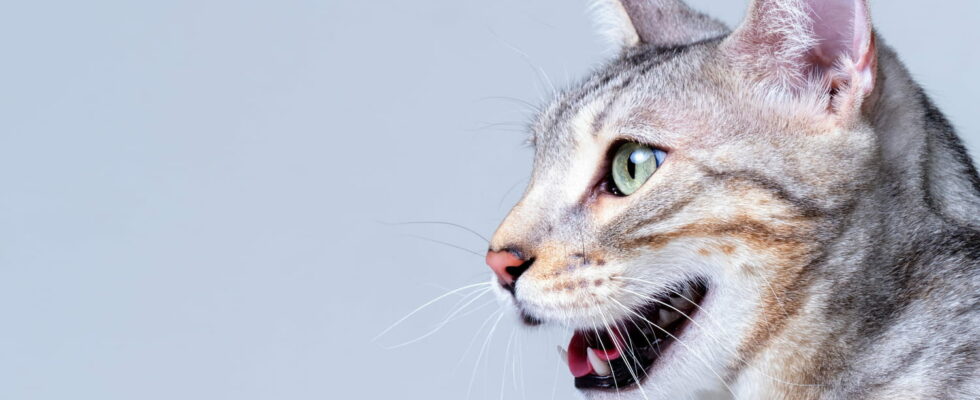Contrary to what one might think, a cat does not only purr when it is happy.
Cat purrs are often interpreted by their owners as a sign of happiness or contentment. When your feline curls up against you while purring, he seems to be expressing his confidence and well-being. However, these sound vibrations, typical of cats, can also have other, more worrying meanings. A cat can purr to calm itself in the face of a stressful situation, to relieve pain or even when it is ill. In these cases, purring is triggered by an intense emotion such as pleasure or, conversely, pain.
Indeed, according to feline behaviorist Katia Guillet, also author of the book “55 preconceived ideas about cats” (Opportun éditions), in cats “Through this purr, the body attempts to establish a certain pain management by creating endorphins to reduce the suffering felt.” Science goes even further by explaining that purring is also a way for cats to express themselves, like meowing. Clearly, when your animal purrs, it communicates with you to say that it is happy or on the contrary that it is suffering.
Of course, it is not always easy to recognize suffering in a cat, because they often mask their pain so as not to appear vulnerable. On the other hand, if there is any change in behavior, for example, if he becomes more aggressive, if he hides or if he stops interacting with you as usual, at that point, we need to start asking questions. Likewise, if your cat no longer eats or drinks, if it neglects its daily hygiene, if it has difficulty moving around or doing its business, you should also be alarmed.
As you will have understood, purring is an important sign to watch for for your pet’s health. You must pay attention to the context and the general behavior of your cat to better understand what he is trying to express. And if in doubt, consulting a veterinarian remains the best solution.
